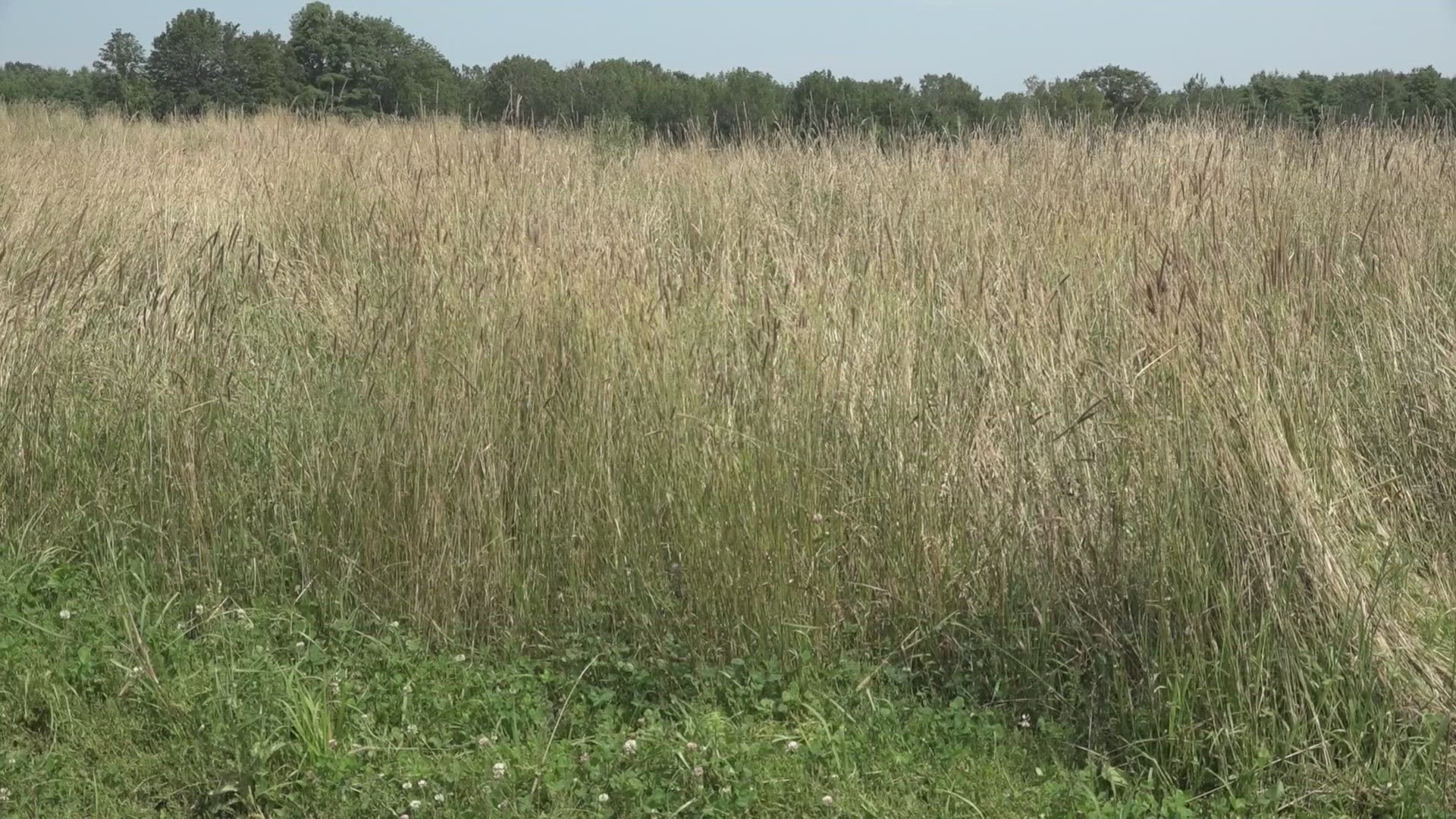WINDHAM, Maine — The usually dry summer season in Maine has been full of rain, causing unexpected challenges for the state's farming community.
While farmers typically contend with scorching heat and drought, this year's excessive rain has led to a shortage of hay, a critical component of livestock feed.
As the rain persists, Maine's agricultural landscape faces a unique set of hurdles that extend beyond the fields.
From livestock nourishment to grocery store shelves, the repercussions of the hay shortage are rippling through the agricultural supply chain.
Hay, a staple feed for farm animals, has become extremely limited this year due to the inclement weather.
This scarcity has driven up prices while diminishing the nutritional value of the available hay, leaving farmers grappling with the conundrum of paying more for lower-quality feed.
Jeff Greenleaf, operation manager at the Maine State Society for the Protection of Animals (MSSPA), said, "This year, we haven't cut our hay at all due to the weather. There is so much rain, and the fields are so wet we can't even get our equipment into the fields to cut hay."
On an average year, their hay barns are usually brimming with hay by late July or early August.
Greenleaf's hay barn, which was once filled with 210 bales of hay, now stands with a mere 26 bales due to the adverse weather conditions.
The shortage isn't just a matter of quantity; it's also a question of quality.
"If we hayed this today, it will not nearly be enough nutrition that the animals need," Greenleaf said.
The scarcity of hay has led to an inevitable increase in prices, putting additional strain on farmers' budgets.
Just last year, a standard 4 by 4 bale of hay could be purchased for $35 to $45. Presently, the average price for the same bale has soared to $65.
Faced with such financial pressures, some farmers have been forced to source hay from out-of-state suppliers, further exacerbating the situation.
The United States Department of Agriculture (USDA) acknowledges the plight of these small farms but cites funding limitations that prevent comprehensive relief efforts.
Rhiannon Hampson, state director of USDA Rural Development, emphasized, "These kinds of expenses, although we can try to plan for them, our margins are so small operating through the year that you can't set aside enough funding for what a disaster like this is going to do to you financially."
The USDA encourages affected hay farmers to reach out to their local Farm Service Agency (FSA) office to report losses and explore potential assistance programs.
According to a spokesperson, Maine is home to 154 local farms grappling with the repercussions of the hay shortage.

